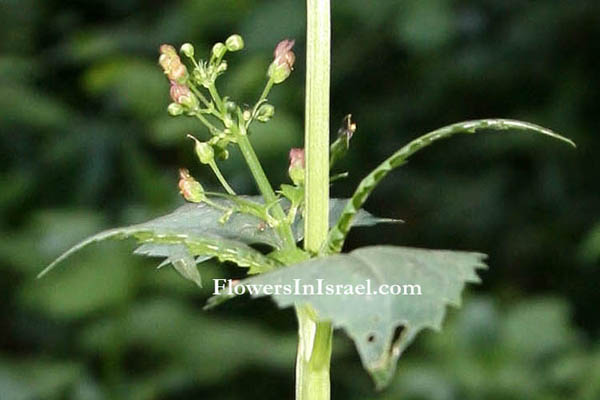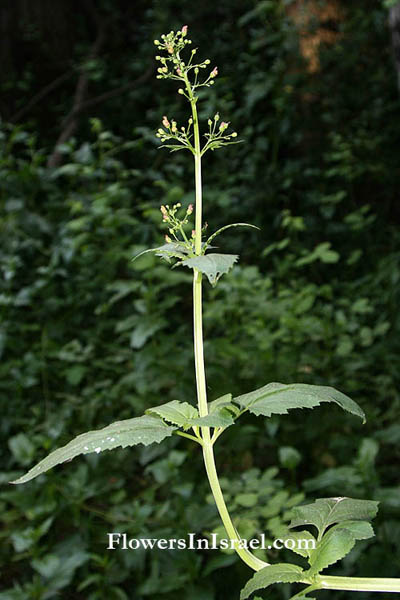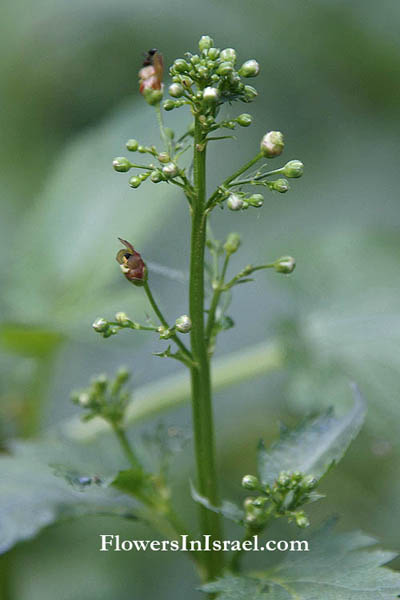Hebrew: לוענית גדולת-עלים, Arabic: ﺒﺭﻭﺍﻙ
| Scientific name: | Scrophularia macrophylla Boiss. | |
| Common name: | Figwort | |
| Hebrew name: | לוענית גדולת-עלים | |
| Arabic name: | ﺒﺭﻭﺍﻙ | |
| Family: | Scrophulariaceae, לועניתיים |

|
| Life form: | Hemicryptophyte | |
| Leaves: | Alternate, entire, dentate | |
| Flowers: | Brown, yellow | |
| Flowering Period: | May, June, July, August, September | |
| Habitat: | Humid habitats | |
| Distribution: | Mediterranean Woodlands and Shrublands, Semi-steppe shrublands, Montane vegetation of Mt. Hermon | |
| Chorotype: | Med - Irano-Turanian | |
| Summer shedding: | Perennating |

Derivation of the botanical name: Scrophularia, named in 1474 by an Italian physician who noticed the resemblance between the rhizomal knobs of some species and the tubercular condition of human lymph nodes called scrophula. macrophylla, macros μακροϛ long; tall, high, deep, far; phyllon φυλλον leaf, foliage; large-leaved. The Hebrew name: לוענית, loanit, formed from לע, loa (=throat) with suffix נית - nit.
Nicholas Culpeper (1653), an English botanist, called the herb “throatwort” because it was used to treat scrofula. He also mentioned that it was used to remove redness, spots, and freckles from the face. During the 16th and 17th centuries, Scrophularia was esteemed as the best medicinal plant for relieving all kinds of swellings and tumors, a treatment which continues in Europe to this day. The leaves were also used against skin diseases, sores, abscesses and gangrene. Dioscorides recommended it for the dispersal of tumours and the cleansing and healing of ulcers, wounds, burns and haemorrhoids. 
|